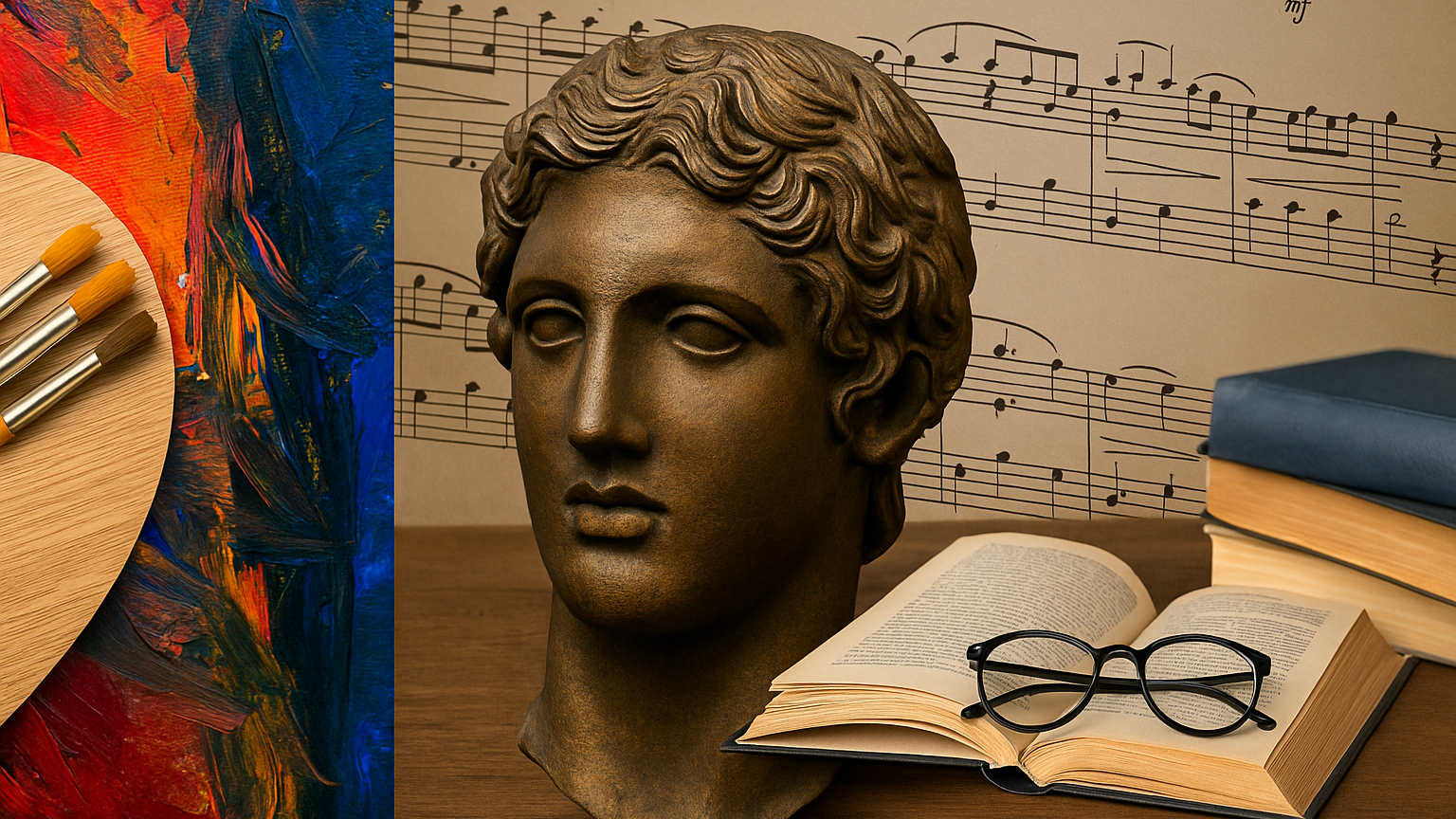Over 200 Greek Australian artists have created a rich artistic activity, mainly as painters, sculptors, designers, photographers and creative architects. Many of them developed special talent and distinguished themselves with honours in Australia and internationally.
This brief and almost passing reference to the cultural events of the Hellenism of Australia does not exhaust the firmament of their creative activity, but simply reminds all of us of the inexhaustibility of creation in art.
During the interwar period, Greeks who specialised in painting and iconography were influenced by the local painting and the style of the Indigenous people and with their works won pan-Australian approval and admiration. For example, the immigrant from Kastellorizo, Vlasis Zanalis, who is considered one of Australia’s greatest painters, combining European art with that of the local Indigenous people, painted the first icons of the Cathedral of Saints Constantine and Helen, as well as icons of great value of the Church of the Holy Trinity in Sydney and an icon in the Church of the Annunciation in Melbourne.
His work was then followed by the artist and illustrator Yiannis Grafilakis, who created the rest. In the field of restoration of monuments, including Christian churches, Athanasios Andronas, who was born in Melbourne to immigrant parents from Halkidiki, restored and decorated the Anglican and Catholic Cathedrals, St. Patrick and St. Paul respectively, as well as the beautiful church of Xavier College in Melbourne.
Dozens of Greek Australian painters distinguished themselves with their talent in many Australian cities and organised or participated with their works in solo or collective exhibitions. Influenced by Australia’s natural, cultural landscape and historical space, their works promoted and depicted their own grafted Greek Australian art, while dozens of their works are hosted in public and private galleries.
It would be unfair and inelegant to refer to only some of our artists, as each one of them pained over his/her work and creation and contributed to the cultural presence of the Hellenism of Australia.
In the field of artistic creation, it is necessary to focus on the research interest of future art historians and to offer the created art as a subject and course of study and research at university level. In the three volumes of the History of the Greeks, I refer by name to dozens of artists, creators, painters, sculptors, photographers, artists of printmaking, ceramics, drawing, craftsmanship, who brought their inspiration and passion to fruition.
Some of the contemporary Greek Australian painters include Nikos Kypraios, who since 1972 developed a rich artistic activity in Melbourne and Greece, and Nikolas Tsoutas in Sydney. Very important is the artistic presence, among others, in the sculpture of Leonidas and Kostas Kalamaras, in the engraving of Nikos Nedelkopoulos and Takis Sorros, in the photographic work of Alexis Syndikas, Georgia and Elizabeth Gertsakis and Georgia Metaxas, in the sketching of the world-famous Tonis Raftopoulos, in the decoration and structuring of Niki Savva, in the prosthetics and metal by Stelios Arkadiou and in the multimedia of Philippos Georgiou.
The musical presence of contemporary Greek Australian composers, musicians, lyricists and conductors is characterised by their intense anxiety to graft the Greek cultural heritage (ancient, Byzantine and demotic) with the contemporary Australian and indigenous peoples. Most have composed works for theatre and cinema, some for opera, while several have excelled in classical and post-modern music.
Among the main pioneering exponents of the musical creation of Greek Australian artists in the post-war period were Savvas Christodoulou and Yiannis Apeitos with very important compositions in opera works. Themis Mexis in Sydney, the brothers Tasos and Christos Ioannidis, Stelios Tsiolas, and Kostas Tsikaderis in Melbourne, Spyros Rantos in Vrisvani. Some artists indulged in classical music where they distinguished themselves in Australia, such as Aliki Katsikas and Michalis Christoforidis, while Stella Axarlis, Irene Kassimati, Troudi Kapoulitsa, Liana Kanellopoulou and Eli Krizou achieved international recognition as soprano and Kostas Filippatos as baritone.
Since 1916, when the first Greek Australian book was published by John D. Kominos, more than 800 books have been published and circulated in Australia by more than 300 authors, mainly poetry collections, prose and plays, biographies, autobiographies, novels, travelogues. Most of them were published in Greek by printing houses, newspapers, publishing houses and university centers for the study and study of Greek culture. Most were released in Melbourne and Sydney, covering topics related to literature, theatre, the experience of migration and history.
After 1970, significant progress was made in the publication of literary works, with the introduction of government sponsorship and the socio-economic consolidation of writers. After 1980, with the establishment and operation of university chairs and centers for Greek studies, remarkable novels and poetry collections were published, while the production of theatrical plays, mainly ethographies and comedies, increased.
The main exponents of the poetic literature of the Hellenism of Australia, in the post-war period, were Dimitris Tsaloumas, Nikos Nomikos, Stylianos Charkianakis, Yiannis Liaskos, Erma Vassiliou, Dina Amanatidou, Stathis Raftopoulos and others. In prose, remarkable work was presented by Antigoni Kefala, Vasso Kalamara, Erma Vassiliou, Yiannis Vassilakakos, Dimitris Tzoumakas and others. Koulas Teo and Theodoros Patrikareas and Panos Georgiou in humoristic novels.
In the last 40 years, there has been intense bibliographic activity in the field of recording the history of the Greeks of Australia and not only with Hugh Gilchrist, Anastasios Tamis, Georgios Kanarakis and Michalis Tsounis as main historians, while in the critical text, Efstathios Gauntlett, Vrasidas Karalis and Michalis Tsianikas, have distinguished themselves with their works. Academics Antonis Dracopoulos, Panagiota Nazou, Georgios Fanzis, and especially G. Kanarakis contributed systematically to literature with their works.*Professor Anastasios M. Tamis taught at Universities in Australia and abroad, was the creator and founding director of the Dardalis Archives of the Hellenic Diaspora and is currently the President of the Australian Institute of Macedonian Studies (AIMS)
